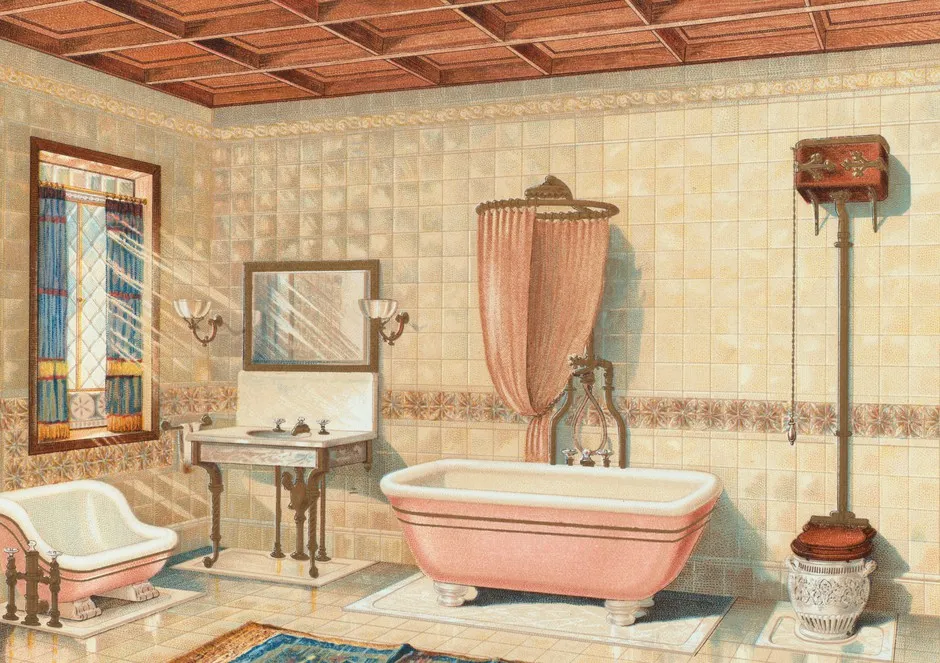Think about your bathroom. The gleaming white porcelain‚ the separate toilet room‚ the meticulously tiled surfaces… have you ever considered that these features might be more than just aesthetic choices? Believe it or not‚ the way we design and use our bathrooms today has been profoundly influenced by a history of battling infectious diseases. From cholera outbreaks to the ever-present threat of the common cold‚ our fear of germs has subtly but significantly shaped this most private of spaces. Let’s dive into the fascinating‚ and sometimes unsettling‚ story of how public health concerns transformed the American bathroom.
The Germ Theory and the Rise of Sanitary Bathroom Design
The late 19th century saw the widespread acceptance of germ theory; This revolutionary idea‚ that microscopic organisms caused disease‚ completely changed how people thought about hygiene. Suddenly‚ cleanliness wasn’t just about appearances; it was about survival. This paradigm shift had a direct impact on bathroom design.
The Push for Porcelain and Tile in Bathroom Design
Porous materials like wood were out. Smooth‚ non-porous surfaces that could be easily cleaned and disinfected were in. Enter porcelain and tile‚ the heroes of the sanitary bathroom. Think about it: those gleaming white tiles weren’t just stylish; they were a statement about hygiene and a defense against invisible enemies.
Consider these benefits of porcelain and tile:
- Easy to clean and disinfect
- Non-porous‚ preventing the growth of bacteria
- Durable and long-lasting
Infectious Disease and the Segregation of Bathroom Fixtures
Before the germ theory took hold‚ it wasn’t uncommon for toilets and bathing facilities to be combined in a single space‚ or even located outside the home entirely. But as awareness of fecal-oral transmission grew‚ so did the desire to separate these functions.
The Separate Toilet Room: A Response to Disease Concerns
The separate toilet room‚ often referred to as a water closet‚ became increasingly popular. This design feature aimed to isolate the toilet‚ the perceived source of the most dangerous germs‚ from the bathing area. Was this an overreaction? Perhaps. But it reflects the very real fear of disease that permeated society at the time.
Here are some reasons why separate toilet rooms gained popularity:
- Reduced the spread of germs from toilet to bathing area
- Provided greater privacy
- Allowed for easier cleaning and disinfection
The Evolution of Ventilation in Bathroom Design Due to Infectious Disease
Good ventilation became another key element in the sanitary bathroom. The idea was to remove stale air and any lingering germs that might be lurking. This led to innovations in window design and the development of mechanical ventilation systems.
Windows and Fans: Fighting Stale Air and Germs
Large windows were incorporated into bathroom designs to allow for natural ventilation. Exhaust fans‚ initially simple and manually operated‚ later evolved into the electric-powered models we use today. These systems were all about one thing: preventing the buildup of stagnant‚ germ-laden air. Can you imagine a modern bathroom without an exhaust fan?
Frequently Asked Questions About Bathroom Design and Infectious Disease
So‚ the next time you step into your bathroom‚ take a moment to appreciate the history embedded in its design. The smooth surfaces‚ the separate toilet room‚ the whirring exhaust fan – they’re all testaments to our ongoing battle against infectious diseases. Our bathrooms are not just places of personal hygiene; they are reflections of our collective anxieties and our unwavering pursuit of a healthier life. It’s a story told in tile and porcelain‚ a silent narrative of how fear and ingenuity have shaped the spaces we inhabit. And it’s a story that continues to evolve as we face new and emerging health challenges.






